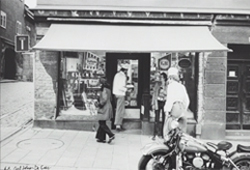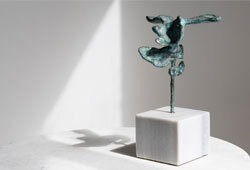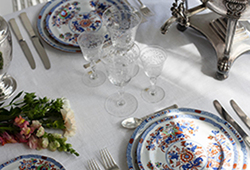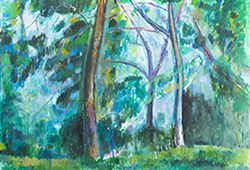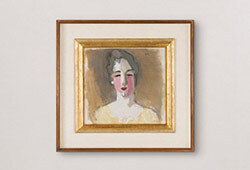Gösta Adrian-Nilsson
"Huvud i gult" (Head in yellow)
Signed G.A.N. Executed in 1914. Oil on cardboard panel, 38.5 x 32 cm.
Provenance
Acquired in the 1950s, thence by descent to current owner.
Exhibitions
Riksförbundet för bildande konst, exhibition no. 133 Sörmland's bildningsförbund.
Galerie Denise René, Paris, "Swedish Art 1913-1953".
More information
Gösta Adrian-Nilsson (GAN) was the only Swedish artist of significance within the Swedish avant-garde who studied in Berlin rather than Paris before the World War of 1914-1918. In Berlin, he became acquainted with Herwarth Walden, the dynamic head of the magazine and gallery Der Sturm, and was profoundly influenced by the new modernist art exhibited at the gallery. The strongest impressions were made during Der Sturm's comprehensive showcase of the European avant-garde at the epoch-making exhibition Erster Deutscher Herbstsalon in the autumn of 1913. There, GAN encountered French Cubism, Italian Futurism, and the Expressionism of the Der blaue Reiter group with Kandinsky and Franz Marc as the leading figures, all at once. The period of hardship in Berlin ended fortuitously for GAN in the summer of 1914 in Cologne, where he had secured employment as a "künstlerischer Erklärer", a sort of superintendent, in architect Bruno Taut's famous Glashaus at the Deutscher Werkbund's major arts and crafts exhibition. However, the position was abruptly terminated when the entire exhibition closed on August 5 due to the outbreak of war at the beginning of the same month. A message came from Berlin: "Sie können fahren wohin Sie wollen, die Sache ist erledigt," GAN wrote many years later in his memoirs.
The journey home was adventurous, but by mid-August 1914, GAN was back in Lund, bursting with impressions from Berlin and Cologne. He rented a room on Idrottsgatan in Väster, the new industrial and working-class district of Lund. There, he could observe athletic young sportsmen at the sports field, and he passed the gasometer and a couple of industries on his walks to the central railway station. During the two years of 1914-1916, he created his revolutionary new futurist-cubist style in his small apartment, initially with athletes and smoke-billowing locomotives as preferred subjects.
In 1913, GAN painted a portrait of an electrician about which GAN expert Jan Torsten Ahlstrand writes: "Whether the painting is an authentic portrait of an electrician or not, it is both stylistically and content-wise an exceptionally interesting GAN painting. The Electrician is a portrait of the new era's man in the futurist spirit, a masculine, strong-willed, and decisive person who, like a seer, gazes into the future that belongs to him and the new technology." (GAN, Gösta Adrian-Nilsson, Signum, 1985, p. 46) Although this portrait is highly stylised, it still retains a lingering naturalistic touch.
In the auction's "Head in Yellow", executed a year later in 1914, GAN has artistically blossomed in his expressive cubo-futuristic style. He has left the grey, subdued colour palette behind and allows the yellow and red colour fields to glow on the canvas. The image is dissolved into prismatic parts, inspired by the non-figurative kaleidoscope images he had seen in Bruno Taut's "Glashaus" in Berlin.
"Head in Yellow" was acquired in the 1950s and has been in the same family's possession ever since.






